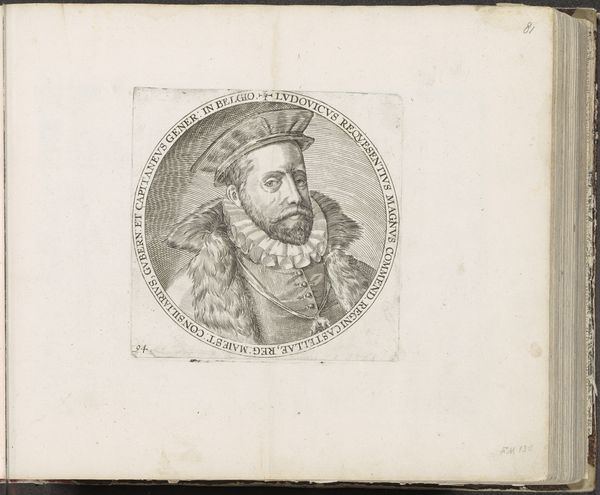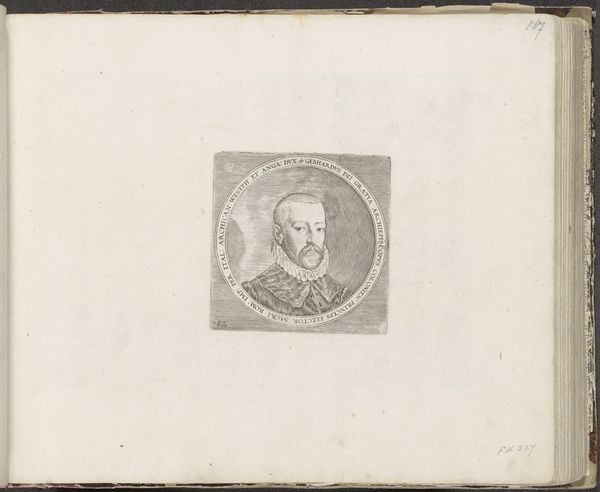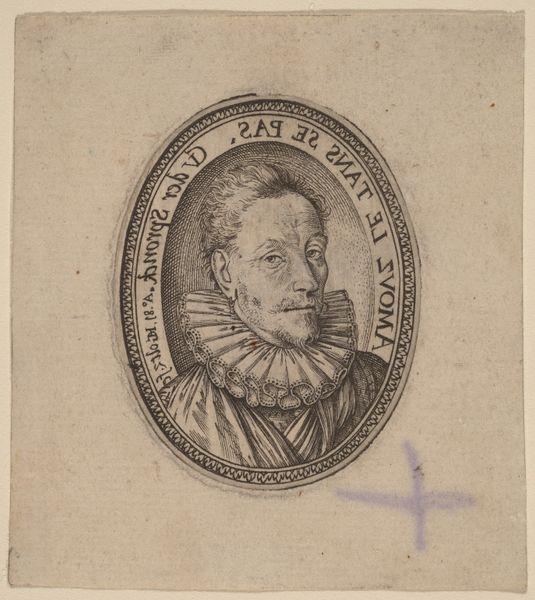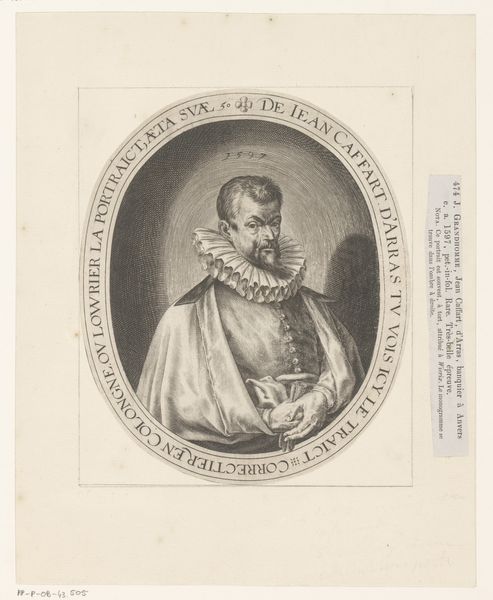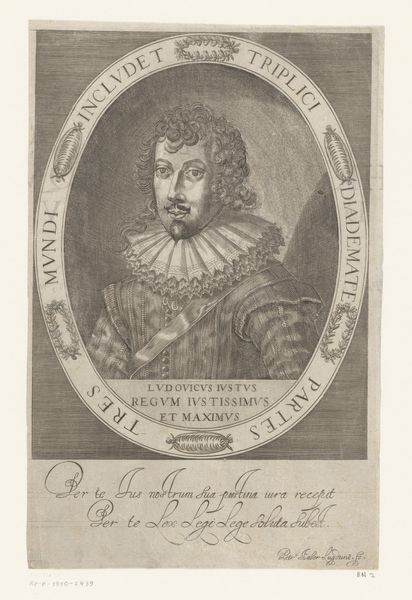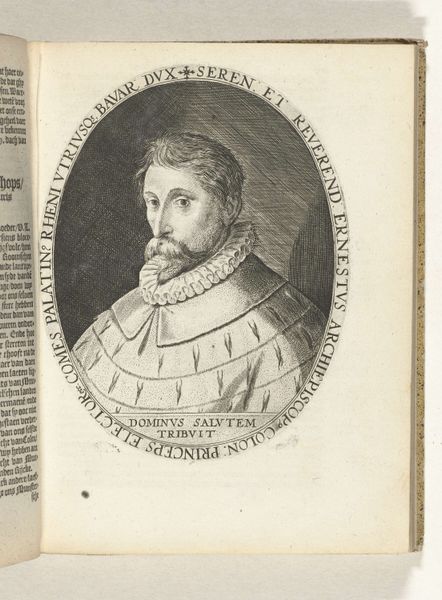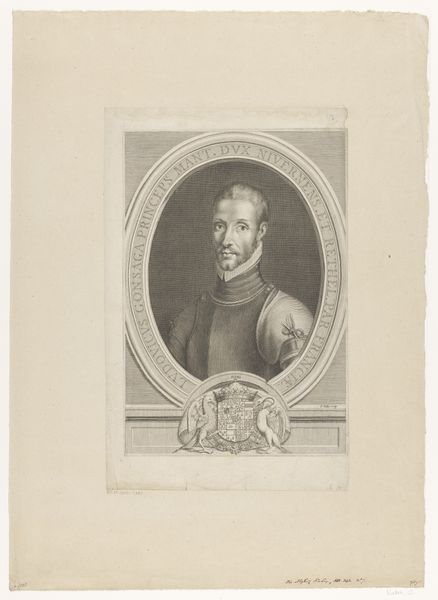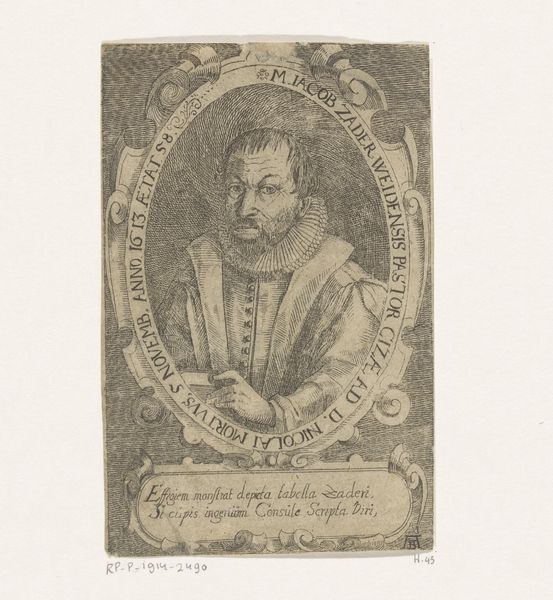
print, engraving
#
portrait
# print
#
11_renaissance
#
line
#
history-painting
#
northern-renaissance
#
engraving
Dimensions: height 180 mm, width 188 mm
Copyright: Rijks Museum: Open Domain
Curator: Let’s examine this print, “Portret van Ernst van Beieren,” an engraving attributed to Frans Hogenberg, dating from sometime between 1583 and 1620, currently held at the Rijksmuseum. The piece places the subject within a clearly delineated circle, and the artistry, although perhaps constrained by the printing medium, appears detailed. Editor: He looks… pinched? Perhaps it's the severe ruff collar, like a doily attacking his neck. The fellow clearly had some power, but the engraver hasn’t quite captured… oh, what’s the word… levity? He seems like he hasn’t smiled in decades! Curator: Power, certainly. Ernst van Beieren, Archbishop-Elector of Cologne, was a significant figure. Note the inscription circling the portrait. Such visual representations were key in disseminating images of power. These prints circulated widely, contributing to his image. Editor: I do appreciate the craftsmanship of the engraving. The subtle shading, the almost fabric-like texture of the ermine mantle. It's easy to forget how labor-intensive these things were to produce, each tiny line carefully etched into the plate. Do you think the collar was added in post, after the fact, perhaps it was a newer fashion, which had to be applied retroactively? Curator: Interesting question! Although stylistic elements were often a result of workshop practice and collaborative production, adjustments could be introduced to meet a specific audience or adjust to newer demands. Line engraving facilitates this well, unlike other graphic methods. It gives some freedom in altering designs and motifs in printed form. Editor: Well, fashion changes quickly, even in the 16th century! Though, really, I wonder what Van Beieren *felt* like when the engraver was there? Because while art endures, feeling? That fades fast… I still prefer my interpretation of how dour he feels overall. I wonder if it captures his soul? Does an etching qualify as “soul-capturing technology"? Curator: In essence, that widespread circulation is a form of endurance itself. Each print represents labor, distribution, and a historical moment – all things, by their material properties, endure. Perhaps this print, as a mass-produced object, contains as much truth of the time as a painting does soul. Editor: Well said! Still, I think next time I see a ruffle, I'll whisper, "smile!". Curator: Indeed. Material realities and fleeting emotions – two sides of the same coin, captured in ink and paper.
Comments
No comments
Be the first to comment and join the conversation on the ultimate creative platform.
